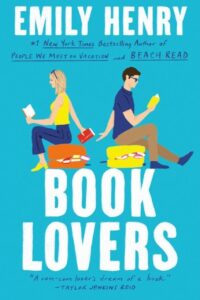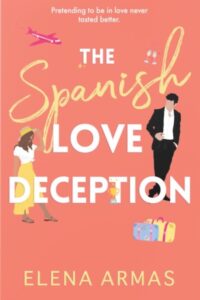We’ve all been there: caught up by a captivating cover, a glowing review, or a friend’s fervent recommendation, only to end up with a reading experience that felt more chore than charm. In the vast ocean of books, we often invest precious hours adrift in a narrative that we can’t warm up to.
Not every book is to everyone’s liking. This post will offer techniques to identify a book that might not meet your expectations, before or after you’ve started reading. Time is a limited resource far too valuable to waste.
Before You Dive In: Pre-Reading Signals
Pre-reading is a recognition phase. The more information you can gather, the better equipped you’ll be to make an informed decision.
The Blurb: More Than Just a Summary
The back cover or inside flap blurb is your first major clue. Look for specific details rather than merely skimming for the plot.
Confirm the genre aligns with your preferences. The main genres, such as romance, fantasy, mystery, or horror, are often easily recognisable. The traps usually lie in the sub-genres or categories. For instance, if you prefer closed-door romances like Book Lovers, The Spanish Love Deception may be a mismatch. Sometimes, elements of the story that might turn off readers are only subtly hinted at in the blurbs.
Identify keywords and tropes. Here is where you’ll find both the explicit and subtle hints. Tropes like ‘love triangle’, ‘enemies-to-lovers’, ‘fake dating’, and certain terms like ‘spicy’, ‘undoing’, ‘raw vulnerability’, or ‘all-consuming romance’ carry specific connotations. These either align with your mood or they don’t.
Discern the author’s tone. Is it humorous, serious, suspenseful, or philosophical? Check if the tone resonates with your expectations for your next read.
Prioritise substance over hype. Sometimes blurbs are vague or overly dramatic to build buzz. Look for concrete details, not just marketing rhetoric.
The First Few Pages: Your Personal Test Drive
This is the most crucial pre-reading step. Take advantage of bookstore browsing or online samples.
If the first sentence, paragraph, or page doesn’t pique your curiosity, introduce an intriguing character, or establish a compelling atmosphere, it may be an indicator of a mismatch.
Every author has a distinct voice. Their writing style is either engaging for you or it isn’t. Determine if it feels too sparse, too verbose, too flowery, or too informal for your taste.
Get a sense of whether the beginning feels rushed, slow, or just right for your preference.
The initial characters should be relatable, intriguing, or at least understandable. You’ll feel a connection or a desire to learn more about them. If this connection isn’t established from the outset, it might not happen later.
Dialogue either sounds natural and authentic, or it feels stilted and forced. Check if you can ‘hear’ the characters speaking.
Also, check if you can feel the sense of place or emotion through the author’s descriptions. Is your mind swept away during those moments you’re reading the passage?
Reviews and Recommendations: Filter Wisely
Reviews can be helpful, but they are subjective. Additionally, beware of spoilers; they are incredibly common in reviews and can steal a great experience from you.
Go beyond the star rating. High-star rankings don’t guarantee you’ll like the story, just as a low-ranked book doesn’t mean it won’t resonate with you. Skimming for elements you value, be it character development, intricate plot, or beautiful prose, can show you a potential fit. Conversely, finding elements you care less about, like ‘high heat’, if you prefer clean romance, signals a possible mismatch.
Find a ‘reviewer soulmate’. Over time, you might identify specific reviewers or literary critics whose tastes consistently align with yours. Their opinions may hold more weight for your preferences.
Beware of extreme opinions. Books with polarised reviews (either loved or hated) often have a strong, distinct style or subject matter. If controversial books do not appeal to you, this may be a red flag. If they do, it’s an invitation.
Process friends’ recommendations thoughtfully. While well-intentioned, your friends’ tastes aren’t always yours. Take their personalities into consideration and ask them why they loved it to see if their reasons align with your preferences.
Author’s Backlist and Reputation
When an author is new to you, a quick search of their previous works may offer valuable insights. Any previous books with elements you don’t enjoy are a clue that the one you’re considering will have similar features.
In addition, sometimes authors discuss their inspirations, writing process, or the themes they explore on social media or in interviews. It might seem like a lot of work at first, but especially for sensitive or discerning readers, it can potentially save time later, as well as protect you from unwelcome emotional impact.
After You’ve Started: When to Call It Quits (or Power Through)
You’ve taken the plunge, but now it feels like homework, and you’re bored out of your mind. Still, you’re unsure if it’s just a slow start or if your mind won’t engage with any story for the time being, no matter how good it may be.
Here are some techniques to find out if it’s time to let it go.
The ‘Fifty-Page Rule’, ‘One Hundred-Page Rule’, or ‘Twenty Percent Rule’
This is a popular guideline that suggests giving a book a fair chance to draw you in. Fifty to one hundred pages (or roughly 20% of the book, for longer works) are enough for the plot to develop, for you to connect with characters, and for the author to establish their world.
This isn’t a hard and fast rule, however. If you’re miserable after 20 pages, there’s no shame in stopping. Conversely, if you feel on the cusp of enjoyment, give it a few more pages.
What You Think and Do While Reading
A wandering mind signals disinterest – constantly checking your phone, looking around the room, or even an irresistible urge to clean the house indicates that the book isn’t holding your attention.
It’s similar when it takes a while to pick the book up again after you put it down because you don’t care what happens next, feel annoyed by what you’ve just read, or can’t connect with any character. Rolling eyes, bored sighs, and muttered complaints about characters, plot, or writing style strongly suggest the book isn’t for you.
Forcing Yourself to Push Through
Reading shouldn’t feel like grinding through a to-do list. It’s not an obligation, so check if you’ve fallen into any of the traps below:
- The sunk cost fallacy states that you must finish a book because you’ve already read X number of pages. The time you’ve invested is gone, so don’t let past effort dictate future misery.
- Don’t succumb to peer pressure. Your reading journey is personal. If your friend loved it, it’s about their taste, not yours.
- Challenge the challenges. While reading challenges can be fun motivators, don’t let them force you through books you dislike. This can actually make you resent reading.
Identifying Specific Deal-Breakers
Sometimes, it’s not a general dislike, but a specific element that makes a book unpleasant for you, such as characters who are beyond redemption. Some books feature unlikeable characters by design, which can be effective when they’re compelling. But if you find them repugnant and you’re uninterested in their journey, you don’t have to follow them.
Excessive violence, gore, or disturbing themes are also deal-breakers for some readers, as can explicit sexual content. If a book delves into themes that you find disturbing, triggering, or simply don’t want to read about, prioritise your mental well-being and stop.
Poor writing quality can also be a stumbling block. Bad prose, grammatical errors, clunky dialogue, or inconsistent world-building detract from the reading experience, though tolerance levels vary among readers.
Pacing can also be an issue, according to your personal preferences. Plots that crawl along or rush past important developments can be frustrating for any reader, but a fast pace for slow-burn readers, or vice versa, is frustrating as well.
Predictability or lack of originality is also personal. For quick or seasoned readers, this can be a frequent problem. Stories that feel like one you’ve read a hundred times before, with no fresh take, are likely not worth your time.
Feeling Guilty Instead of Curious
Guilt should never be a reading motivator. If you feel ashamed that you haven’t finished a book, that’s a clear sign to stop reading. Reading is about pleasure or experiencing other relevant emotions. A fitting book makes you feel curious, not burdened.
The Art of Letting Go
Deciding to abandon a book is not a failure; it’s an act of self-care for your reading life. It means you respect your time, energy, and interests. When you let go of a book that doesn’t speak to you, it frees up time for another that you might genuinely cherish. It’s like curating your personal library of experiences.
Of course, there are imperfect books with bad marketing or a slow beginning that still turn out to be rewarding reads. But you can trust your instincts, so the next time you want to pick up a novel, remember these guidelines. Your reading journey should be filled with joy, discovery, and connection, not obligation or dread.
Happy reading, and may your shelves be filled only with stories that make your life experience richer.
Books Mentioned in This Article
(Affiliate links may earn us a small commission, but not always. The price stays the same for you in any case.)

